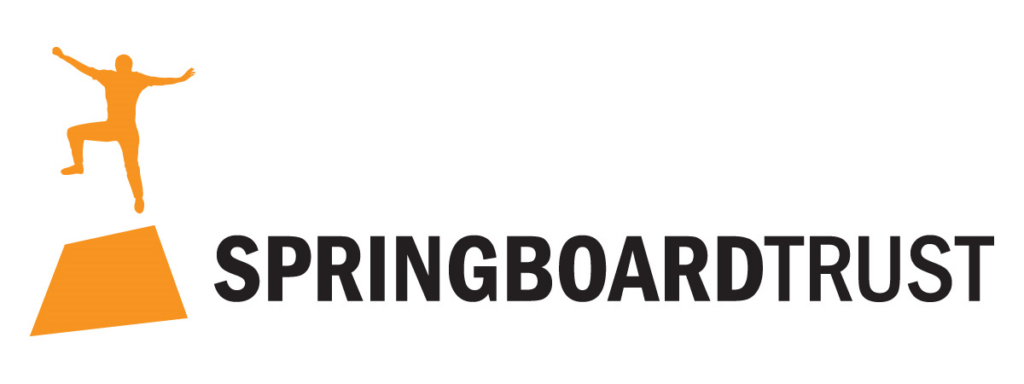Springboard Trust brings together leaders from across Aotearoa to strengthen leadership so our tamariki mokopuna thrive.
We are proud to share our Leading from the Middle webinar featuring CJ Healey (Principal of Long Bay College in Tāmaki Makaurau) and Dan Huggins (CEO of Bank of New Zealand) who share their insights into the critical importance of developing middle leaders to effect organisational change. Scroll down below the video for a downloadable Q & A document and some key messages from the session.
Download
Leading from the Middle Webinar – Q & A
Download responses from Dan Huggins and CJ Healey to questions that were posed but unanswered during the session here!
Key messages from CJ Healey on Leading from the Middle:
- At its core, leadership is about inspiring others to follow a vision – communicate and reinforce the Vision repeatedly and across all levels (weekly, daily, hourly!)
- Revisit the strategy quarterly – always keep what you are trying to achieve at the forefront
- Middle leaders are the ‘engine room’ of change – they do the ‘heavy lifting’ of strategy execution and bridge the gap between senior leadership and those at the frontline making the dream a reality
- Leaders have a responsibility to grow the next generation of leaders – have a heightened awareness of potential leaders both visible and invisible and be explicit about opportunities
- Surround yourself with those who are ‘better than you’ and have different strengths
- Growing leaders and distributing leadership responsibility hugely supports your ability to effect organisational change
- Establishing a ‘deep bench’ of individuals bringing different skillsets allows for improved decision making, sustained momentum, greater resilience to challenges and more agile and appropriate responses
- Foster a culture where delegation and collaboration are the norm – “many hands make light work”, “two heads are better than one”
Trust and mutual respect are critical to driving change – investing in the development of others builds trust as does empowering others and allowing them some autonomy
Ownership, accountability and opportunities to contribute and innovate can lead to more engaged and motivated team, in turn improving outputs and outcomes
Create space and capacity for middle leaders to grow:
- Educate around the principles of leadership
- Provide PLD opportunities
- Align them and their action plans with the bigger picture i.e vision, strategic goals and outcomes
- Encourage proactivity and show faith in them
- Normalise making mistakes and taking responsibility for them – allow for vulnerability, creativity and bravery
- Empower – provide opportunities to own projects and experience levels of autonomy, to collaborate and explore
- Co-construct quality assurance processes that are structured yet flexible
- Provide feedback
- Celebrate success
- Establish clear development pathways
Key messages from Dan Huggins on Leading from the Middle:
1. Why are middle leaders and growing them so important?
- Engine room of change – Middle leaders are the people who determine day-to-day what work gets done. An engine can be well tuned but can also be poorly tuned! If the day-to-day is not aligned to organisational strategy, chaos can result
- Culture – Middle leaders define the culture of an organisation. It’s true that culture is set from the top, but without middle leaders picking that up and driving it, it won’t permeate. We need them engaged, empowered and enthusiastic if the organisation is to achieve desired outcomes.
- Scale – Middle leaders are needed to scale and drive outcomes. It is impossible for a CEO or Principal and a few senior leaders to do this alone.
2. What do we do to develop middle leaders?
- Ensure they are CLEAR, CAPABLE and MOTIVATED. You can almost always point to one or more of these things if things aren’t going well!
- Clarity – know what’s expected, where we want the org to go, where their time and their peoples’ time is best spent. Be clear on how what you want them to do aligns to organisation’s aspirations.
- Capable – are they and their teams able to do what is expected? Do they have the time? The tools? Do they have the right skills, talents and capabilities?
- Motivated – do they want to do what you need them to do/what’s expected? Do they have the aspiration to grow and to learn?
3. What benefitted me as a middle leader:
- I benefitted from people having faith in me and taking a risk on me.
- I was allowed to make mistakes (not catastrophic ones), learn from them and to try different things
- Apprenticeship model from senior Leaders – what seems obvious as a senior leader is incredibly insightful for a middle leader
- Model what you expect to drive the culture you want. As a middle leader you cast a shadow, and people will look to you for the culture of the organisation
4. What you can do as a senior leader to grow middle leaders:
- Be willing to let go – there are many ways to achieve the same outcomes; let others do things differently to how you might have done them
- Let others learn through doing and trying new things – while you may have seen many things before, allow space for leaders to learn for themselves as well as from you sharing your experience
- ‘A river meanders to the ocean’ – remember you will never have a straight run of your strategy through to outcomes, there will be many twists and turns and sometimes it will flow quickly and other times more slowly – that’s natural
- Communicate the strategy simply and over and over. Paint a compelling picture of your vision and aspiration that people can easily connect with and understand
- Culture really, really matters and is lead by middle managers. Clearly define your values and how you operate, otherwise you will end up with a culture that fills the void but it won’t be the one you want









